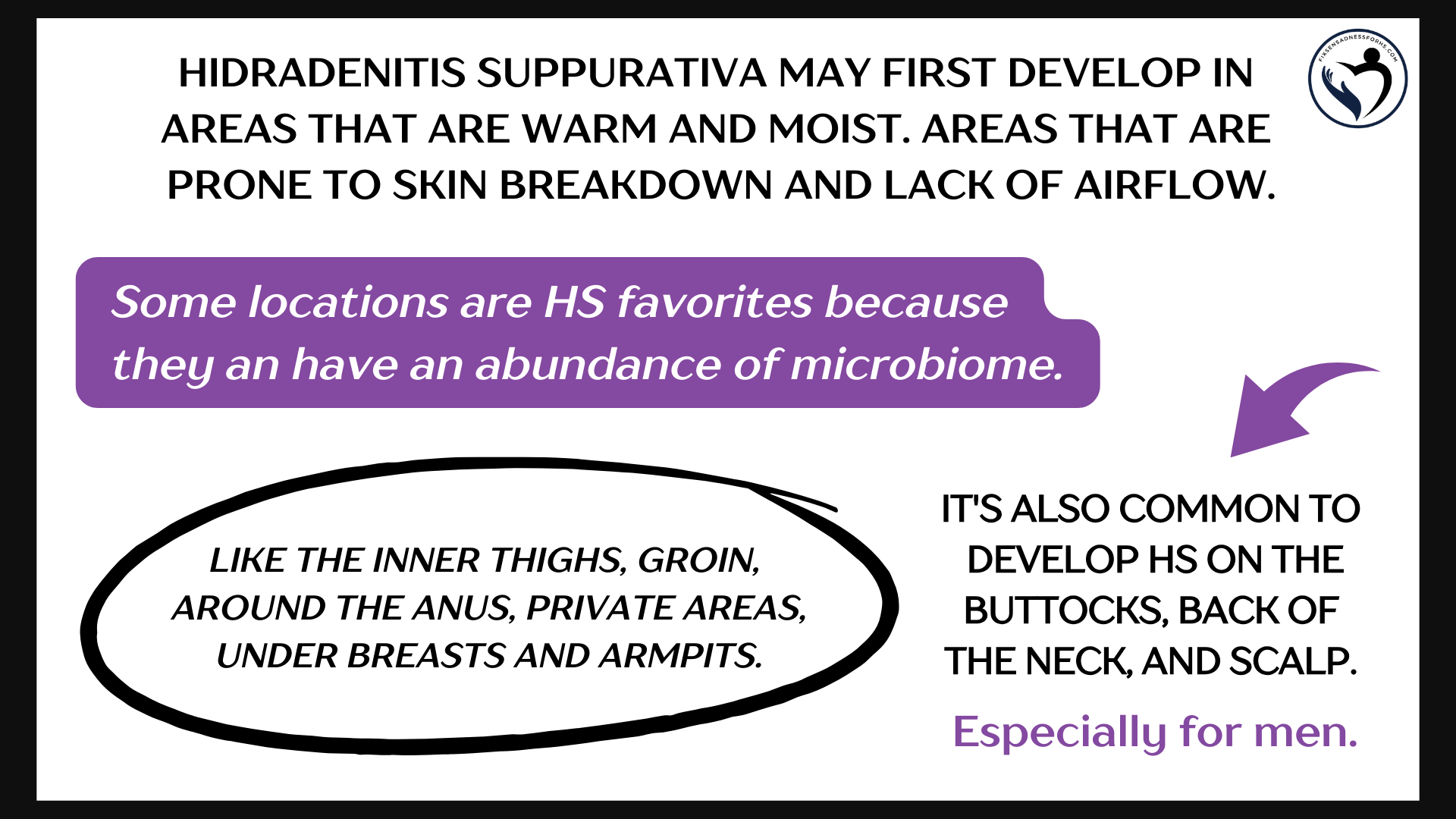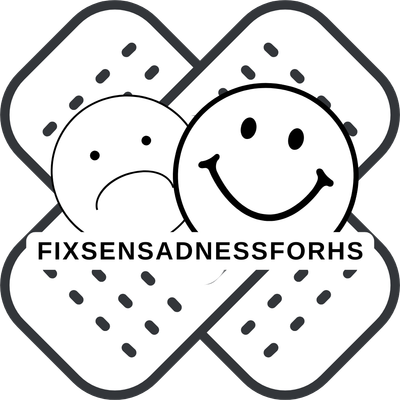How can I determine if I have Hidradenitis Suppurativa?

Any of the following could be an indication that you have HS:
- Recurring nodules (under skin) or abscesses (boil-like) in the same location.
- Recurring nodules or abscesses that develop in other areas of the body. In addition to or independent of letter "a" above.
- Abscesses that continually fill and drain. *It’s possible that scaring and tunneling are present.
- Nodule (lumps) beneath the skin’s surface that may or may not drain. *It’s possible that scaring and tunneling are present.
HS does not always start out as an abscess or nodule. It may start out as a DEP (blackhead-like) or a pustule (pimple-like). These may develop before you experience one and/or all of the above ("a-d").
Although HS can be a very painful illness, not everyone experiences pain.
HS does have favorite spots ⬇️

Knowing this can help assess your situation ⬆️
HOWEVER, HS can develop anywhere hair follicles are found (hair is not necessary). *Follicles are located everywhere on the human body except on lips, the skin of the palms, and soles.
*Not every lump, bump, or spot is HS.
Always consult with a medical professional if you suspect HS for a proper diagnosis. Early intervention is KEY!
For more details on HS, refer to the attached related information below.
Special Note: Researched, compiled, and written by Denise Fixsen. This information is backed by my 46 years of living with Hidradenitis Suppurativa, 10 years of dealing with multiple chronic illnesses, 36 years of advocacy, and continuous education. And to ensure accuracy, reliability, and trustworthiness, I incorporate peer-reviewed studies and other high-quality sources into my articles and material. I also wanted to inform you that I’ve chosen to end my collaboration with editors on my articles. Although there may be grammar errors due to brain illnesses (mostly), with this said, my content remains reliable, factual, and solid.
Medical Disclaimer: This content is solely for information, education, and support. The purpose is not to serve as a replacement for professional medical advice, diagnosis, or treatments.
Sources: doi:10.5114/reum.2018.80709, DOI: 10.2340/00015555-2513, doi.org/10.33235/wpr.30.1.40-49, PMCID: PMC10149852, PMC10861310, PMC7450471, PMID:32884675, doi:10.1001/jamadermatol.2017.0904, doi.org/10.1016/j.clindermatol.2023.08.021, PMC8537933, PMID:34696185, PMC8324042,doi.org/10.1186/s43162-021-00040-5, PMCID:PMC7450471PMID: 32884675 doi:10.1001/jamadermatol.2017.09 doi.org/10.1016/j.clindermatol.2023.08.021 PMCID:PMC9570026, PMID: 36232581 PMCID:PMC3535073, PMCID:PMC8362278PMID: 34409370
FAQ posted on 12-27-2024
